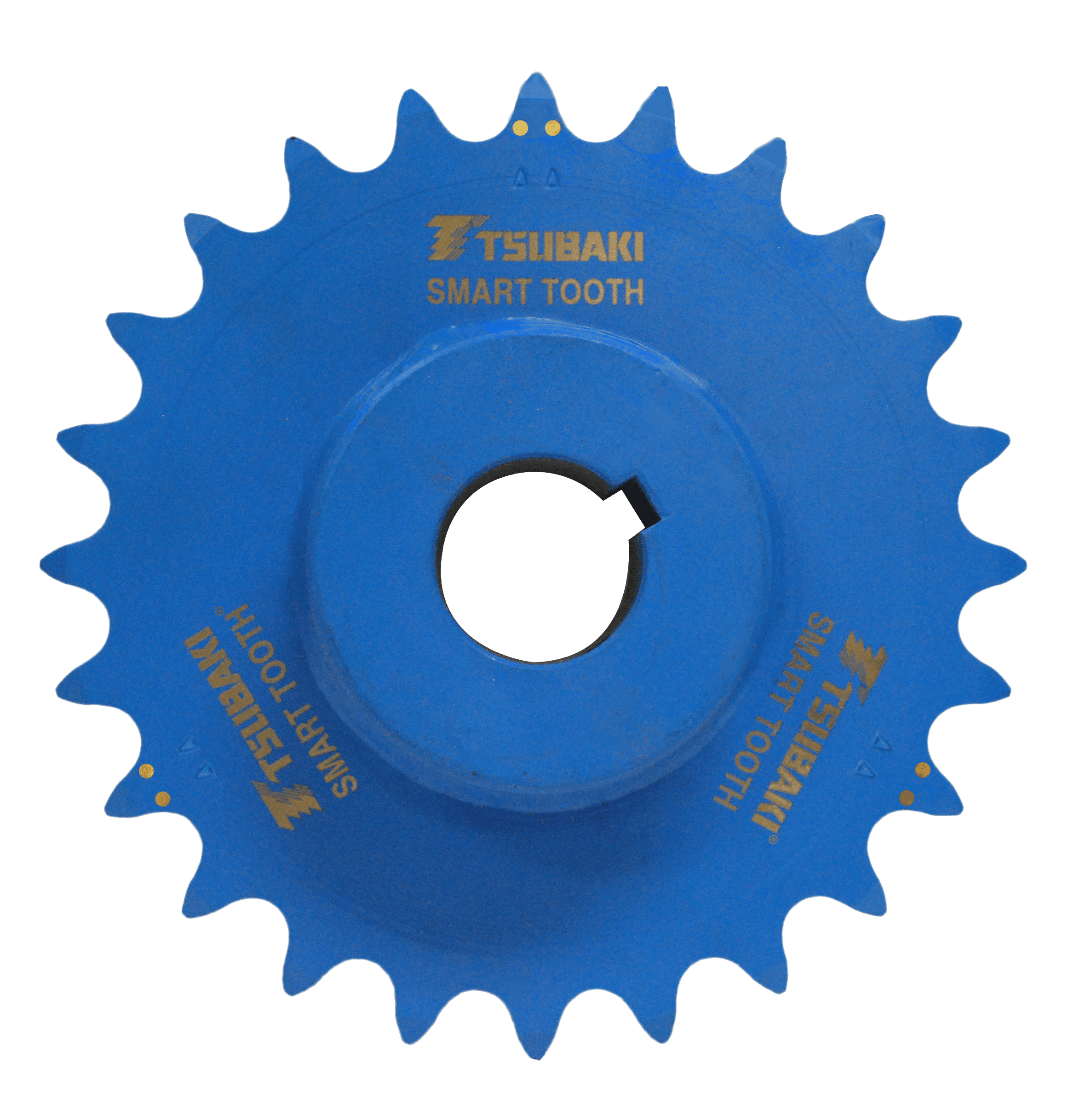A Smarter Approach to Identifying Sprocket Wear
Over time, the sprocket tooth profile area gets worn down by the chain roller. The reduction in the sprocket tooth profile area can result in poor fit and alignment, accelerating chain wear. This can eventually lead to tension loss, slippage, a jumped chain, and costly downtime.
“Worn parts that are not replaced correctly in a timely manner will cause a ‘chain-reaction’ resulting in ancillary damage to connected components, increased labor, higher maintenance costs, more unscheduled down time, and potentially an inferior manufactured product,” says Derek Glugosh, Tsubaki Sprocket Product Manager.
A jumped chain could be a sign your sprockets need to be replaced. You might be tempted to remedy this situation by simply shortening the number of links in the chain to prevent the chain from coming off. But this is a temporary fix that increases the load on the bearings and accelerates chain wear. The worn sprocket will continue to damage the chain and associated equipment until it is replaced.
If you’re not sure whether your sprockets need to be replaced, here are a few signs that might indicate a problem:
- Loose or wobbly sprockets on the drive shaft, which might be caused by a worn bore, key, or shaft.
- Wear on one side of the sprocket plate, which usually indicates misalignment.
- Wear on the working faces of the sprocket teeth, which could be a sign of inadequate lubrication. Watch for scratches, galls, grooves, or visible changes in the tooth shape, such as hooked or shark fin shapes.
Tsubaki’s Smart Tooth® Sprockets allow users to easily identify signs of wear and schedule drive system maintenance before critical failure occurs. Strategically placed wear indicator pins provide a visual indication that a sprocket is either still within the allowable wear tolerance, or that it needs to be replaced.
“When you factor in the cost of replacing other critical drive system components, or the event of non-scheduled downtime, implementing Tsubaki Wear Indicator sprockets makes sense,” says Glugosh. “By using a sprocket with strategically placed wear indicator pins on the thrust faces of the tooth, the maintenance technician has a visual warning of excessive wear. It allows for the scheduling of maintenance rather than run-to-failure.”
Tsubaki specializes in designing and manufacturing high-quality sprockets for a variety of applications and offers additional troubleshooting and on-site services to avoid problems such as misalignment, excessive wear, noise, and more.
To learn more about Smart Tooth Sprockets, download the brochure or contact us today.

